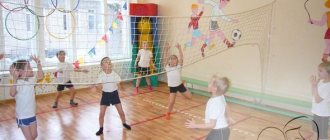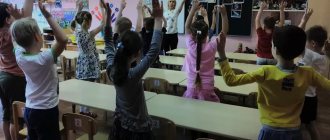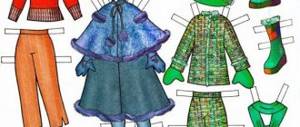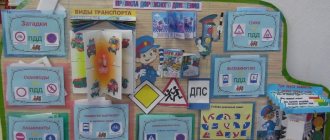Lapbook “Belgorod region”
September 23, 2020 dorohinaov
300 ₽
The laptop book “Belgorod Region” is aimed at patriotic education, expanding ideas about the native region, training cognitive processes (memory, attention, thinking, imagination) and speech.
Category: Lapbook Tags: Belgorod region, laptop, layouts, patriotic education,
- Description
Speech therapist corner in kindergarten, decoration
The speech therapist's corner in kindergarten must be properly designed.
Speech therapy exercises for children from 5 to 6 years old at home
Ideas for decorating a speech therapist's corner in kindergarten
In preschool education, there are two ways of speech therapy education for children:
- specially designated corner
- separate group of speech therapist
In addition to classes directly with a speech therapist, the child must consolidate the material received, so in groups a speech therapy corner will not be superfluous.
Speech therapist's corner
Note! In order for the correctional center to fully function, it must be organized in accordance with the requirements established by the Federal State Educational Standard (FSES): in addition to games, a mirror for articulation training is required, age appropriate, it is important to ensure that the material is updated.
What should be in a speech therapy corner in a kindergarten group
- articulation gymnastics in pictures: (pictures for articulation exercises, sets of exercises for articulation in pictures-tables).
- fine motor skills: tops, dry pool, lacing, stencils, etc.;
- breathing: pinwheels, pipes, balloons, bubbles, air flow games, etc. P.;
- phonemic awareness: games for differentiating sounds
- sound pronunciation: albums on sound automation, game exercises, games on sound automation: “Speech therapy lotto”, etc.
- vocabulary: pictures reflecting the lexical topic; educational puzzles, games: lotto, “Pick a Pair”, “Who Can Name More”, etc.;
- grammatical structure of speech: games “Whose tail?”, “One - many”, etc.;
- coherent speech: plot pictures, “When does this happen?”, “We play in the profession,” etc.;
In connection with the introduction of the Federal State Educational Standard for preschool education and the increase in the number of children with speech pathologies, the requirements for a speech therapist teacher in kindergarten imply that the teacher must constantly engage in self-education, improve his level of professional competence and master the latest educational technologies.
He also has to look for new ideas, forms and methods in his teaching activities, apply innovative technologies in speech therapy that would be interesting to preschoolers and would be appropriate for their age, and would most effectively solve educational, educational and correctional problems. Thus, a lapbook is a mandatory attribute in the speech therapy corner in every preschool educational institution.
Description
The laptop book “Belgorod Region” is aimed at patriotic education, expanding ideas about the native region, training cognitive processes (memory, attention, thinking, imagination) and speech.
Contents: Walking game, demonstration materials, lotto “Coats of arms of the regions”, Mini-book with poems, Lotto “Nature of the Belgorod region”, accordion book Traditional costume of the Belgorod region, cut-out games “Collect a coat of arms, flag, map”, “Collect coats of arms cities and “Cut-out pictures”, a photo album with sights and views of the region, a “Guess” game based on the sights, a game of Paired pictures using the example of holidays, cards Features of the Belgorod region”, an accordion with a description of the coat of arms and flag, an accordion with a description of interesting facts and history areas, coloring pages, pockets, title page, backgrounds to choose from. To print 39 sheets Author: Dorokhina O.V. The material is protected by copyright law. Price in electronic form 300 rub.
Order via shopping cart or by email
Pay via robo-checkout:
Robokassa
Pay via Yandex wallet: Yandex wallet Top up your phone account: +79384771532 Megafon (or megafon bank card: 5446391023440054)
When paying via Yandex-money or Megafon number, please inform us about the name of the order and payment by email
{lang: 'ru'}
Lapbook “Medicinal plants”
Authors:
Ignatova Tatyana Aleksandrovna,
first qualification category;
Klishkina Nadezhda Borisovna;
highest qualification category
teachers of MADOU kindergarten No. 186 in Tyumen
Methodological recommendations for using the didactic manual
“Lapbook “Medicinal Plants” (for the older group of kindergarten)
Introduction
Environmental education is one of the main directions in the education system; it is a way of influencing children’s feelings, their consciousness, views and ideas. Children feel the need to communicate with nature. They learn to love nature, observe, empathize, and understand that our Earth cannot exist without plants, since they not only help us breathe, but also treat us from diseases. We must protect and preserve them, and be able to correctly use their medicinal properties.
In connection with the implementation of the Federal State Educational Standard for preschool education, modern teachers are looking for new approaches, ideas, and teaching methods in order to meet modern requirements for the education and upbringing of preschoolers.
One such teaching tool for today's preschoolers is the lapbook. Lapbook – literally translated from English means “knee book” (lap – knees, book – book). This is a folding book or a homemade paper folder with a lot of different parts, pockets of various shapes, mini-books, accordion books, envelopes of different shapes that a child can take out, rearrange, fold at will and view all its contents in one go. But, despite its apparent simplicity, it contains all the necessary materials on the topic.
The laptop meets the requirements of the Federal State Educational Standard for preschool education for a spatial subject-development environment:
— informative (in one folder you can place a lot of information on a certain topic, rather than selecting various didactic material),
— multifunctional: promotes the development of creativity and imagination, it is possible to use it both with a subgroup of children and individually;
- has didactic properties, is a means of artistic and aesthetic development of the child, introduces him to the world of art;
- variable (there are several options for using each part);
- its structure and content are accessible to preschool children and ensure playful, cognitive, research and creative activity for all pupils.
Working with a laptop corresponds to the main directions of partnership between an adult and children:
- involvement of the teacher on an equal basis with the children,
- voluntary participation of children in activities,
- free communication and movement of children during activities,
- open time end of activity (everyone works at their own pace).
What is the importance of using a lapbook in the work of preschool teachers for a child?
- It will help the child organize information on the topic being studied at will and better understand and remember the material (especially if the child is visual).
— The child will return to the thematic folder more than once to look through it, play the games located in it, and unnoticed to repeat the material covered.
— A laptop promotes the development of creative thinking and develops cognitive interest.
— A laptop, containing many pockets, windows, and folding books that open in different ways, promotes the development of children’s fine motor skills.
— The child learns to use information independently.
— The laptop helps unite teachers, children and parents.
What benefits can such a thematic folder bring to a teacher?
— promotes the organization of material on the topic being studied within the framework of comprehensive thematic planning;
— promotes the organization of individual and independent work with children;
— ensures the implementation of partnerships between adults and children;
- promotes creative self-realization of the teacher.
Based on the above, this didactic manual allows the teacher, together with children and their parents, to creatively approach the study of the topic “Medicinal Plants”.
The purpose of this manual : To familiarize preschoolers with medicinal plants and their significance in human life, to form the principles of ecological culture.
Software tasks:
Cognitive development:
To form ideas about medicinal plants and their place of growth (plants of meadows, gardens, forests); knowledge about the healing power of many plants; ideas about the professional actions of a pharmacist, pharmacist. Introduce children to the medicinal plants of the Red Book.
Develop environmental safety skills; the ability to determine the algorithm of one’s own activities; with the help of an adult, create models and use them in cognitive and research activities.
Exercise children in making a set (medicine) from elements of different quality (medicinal plants).
Develop perception, the ability to identify various properties of plants, including the senses: vision, touch, smell; the ability to compare medicinal plants by smell and flower structure; interest, curiosity and cognitive motivation in relation to the surrounding world; imagination and creative activity.
To cultivate a humane, emotionally friendly and caring attitude towards nature, a desire to protect and protect it.
Speech development:
Enrich children's speech with nouns denoting the names of medicinal plants; adjectives characterizing the properties and qualities of plants.
Improve the dialogical form of speech, encourage attempts to express your point of view, agreement or disagreement with a friend’s answer.
Develop a monologue form of speech; the ability (using a mnemonic table) to talk about a plant, to compose a story based on pictures with a sequentially developing action.
Artistic and aesthetic development:
Formation of a moral and aesthetic attitude to the surrounding reality through communication with nature.
Social and communicative development:
Encourage children to be independent in the game, causing them to have an emotionally positive response to the game action. Teach to obey the rules in group games. Foster creative independence.
Physical development:
Learn to improve your health through communication with nature. Develop healthy lifestyle skills and a value-semantic attitude towards your health.
Development of fine motor skills of the hands.
This manual is intended for working with children 5-7 years old and can be used in different ways:
- as visual material for the teacher’s work in the process of individual educational activities;
— during the teacher’s individual work with children to consolidate the material being studied;
- in the joint activities of parents and children at home.
The contents of the manual include 20 tasks. A gradual complication of the material from simple to complex is ensured. At the same time, fine motor skills of the hands develop. Each task includes bright visual material, which helps to activate the child’s attention.
Description of Lapbook tasks on the topic “Medicinal plants”.
Didactic game “Recognize and name”
The game is intended for children 5-7 years old. From 1 to 9 children can participate in the game.
Didactic task: Teach children to solve riddles. Consolidate knowledge of numbers from 1 to 20. Expand ideas about medicinal plants: appearance, healing power, place of growth.
Equipment used: The game consists of 20 cards with images of various medicinal plants (riddles) and 20 cards with the text of riddles.
Game rules: The numbers on the riddle and guess cards must match.
Game actions:
Option 1. An adult hands out a picture to the children if they are playing in a group of 9 people, and reads the riddle from the card. Having raised the card with the correct answers, the child names the answer, and if the answer is correct, the adult shows a card with the text of the riddle, the numbers on them must be the same. The child keeps the correctly guessed riddle for himself. The one who guessed the most riddles wins.
Option 2. You can play with 3 children by placing cards with images of medicinal plants on the table. An adult asks a riddle and the one who guesses first takes the card for himself. The child must correctly name the medicinal plant (guess) and the number. The one who gets the most guesses wins.
Option 3. You can use the game for individual work with a child. The adult makes riddles, and the child looks for the answer among the cards with pictures of medicinal plants. If the guess is correct, the number on the guess card matches the number on the riddle card.
The pictures and text of the riddles presented in this game can be used in educational activities with children.
Didactic game “Guess who I am?”
The game is intended for children 5-7 years old. From 2 to 10 children can participate in the game.
Didactic task: Learn to recognize a plant by verbal description. Expand your understanding of medicinal plants: appearance, healing power, place of growth. Develop the ability (using a mnemonic table) to talk about a plant.
Equipment used: Emblems of medicinal plants, mnemonic table for compiling a descriptive story about a medicinal plant, colored chips.
Game rules: When describing a plant, you cannot say its name.
Game actions:
Option 1. Up to 5 children can take part in the game. Children put on caps that are emblems of medicinal plants and stand in a circle. The adult gives a consistent description of the plant. Children must learn and name the plant correctly. For the correct answer, the child receives a chip. The one who collects the most chips wins.
Option 2. Up to 10 children can participate in the game. The child leader chooses any emblem of a medicinal plant, puts it on and consistently describes this plant in the 1st person (“I am a medicinal plant. I have...”, etc.), using a mnemonic table. Whoever correctly recognizes the plant from the description becomes the leader. The game repeats itself.
Didactic game “Recognize by smell”
The game is intended for children 5-7 years old. From 1 to 6 children can participate in the game.
Didactic task: Introduce aromatherapy. Expand ideas about medicinal plants. Develop the ability to compare medicinal plants by smell and structure of flowers; perception, the ability to identify various properties of plants, including sensory organs: vision, touch, smell.
Equipment used: a box divided into 6 sections of different colors with sachet inserts of medicinal plants. Each sachet insert shows a circle of a certain color. 6 herbalist dolls with scarves and aprons of a certain color. Handkerchiefs for blindfolding.
Game rules: The colors on the section of the box, on the insert bag, on the scarf and apron of the herbalist doll must match.
Game actions:
Option 1. Up to 6 children can take part in the game. On the table there is a box divided into sections, and there are bags of medicinal plants with the picture down. The teacher names the plant, the children find a bag with this plant. The one who correctly finds the plant places it in the section. The one who recognizes the most plants wins.
Option 2. You can use the game for individual work with your child. There are herbalist dolls on the table, and there is a box divided into sections containing insert bags with medicinal plants. The child is blindfolded and asked to identify a medicinal plant by smell and name its smell (sour, sweet, bitter). Then you are asked to find the insert bag with this plant in the sections of the box and place the herbalist doll there. If the color on the section, insert bag and handkerchief of the herbalist doll match, then the task is completed correctly.
Option 3. Up to 6 children can take part in the game. There are herbalist dolls on the table, a box divided into sections, and insert bags with medicinal plants. Children are blindfolded and asked to identify and name a medicinal plant by smell. The child who correctly guessed the plant must find the insert bag with this plant in the sections of the box and place the herbalist doll there. If the color on the section, insert bag and handkerchief of the herbalist doll match, then the task is completed correctly. The winner is the one who “settled” the largest number of dolls into the houses.
Option 4. Up to 6 children can take part in the game. On the table in front of the children there is a box divided into sections and herbal dolls. The teacher reminds the children that some plants help people even with their smell. Children are blindfolded and asked to identify and name a medicinal plant by smell. The child who correctly guessed the plant must name its smell (sour, sweet, bitter), the medicinal properties of the smell of the plant and place the herbalist doll in the section of the box with the corresponding picture. If the color on the section and the herbalist doll’s scarf match, then the task is completed correctly. The one who “seats” the largest number of dolls wins.
The material presented in this game can be used in educational activities with children.
Didactic game “What grows where?”
The game is intended for children 5-7 years old. From 1 to 3 children can participate in the game.
Didactic task: Expand and clarify children’s ideas about medicinal plants: appearance, place of growth; about plants of meadows, gardens, forests. Consolidate knowledge of numbers. Develop fine motor skills of the hands.
Equipment used : cards depicting meadows, gardens, forests, pictures depicting medicinal plants.
Game rules: The number on the picture of the plant and on the card with the image of a meadow, garden, forest must match.
Game actions:
Option 1. Up to 3 children can participate in the game. The teacher has pictures with images of medicinal plants, and the children have pictures of their places of growth (meadow, garden, forest). The teacher shows a picture of a plant. The child must determine where it grows and, if it matches its picture, “settle” it in his home, showing the card to the teacher and correctly naming the plant.
If the task is completed correctly, the number on the picture of the plant matches the number on the card with a picture of a meadow, garden, or forest.
Option 2. You can use the game for individual work with your child. An adult shows a picture of a medicinal plant. The child must name the plant, determine where it grows and “place” this plant on the desired card (forest, garden, meadow). If the task is completed correctly, the number on the picture of the plant matches the number on the card with a picture of a meadow, garden, or forest.
The material presented in this game can be used in educational activities with children.
Didactic game “Who treats how?”
Didactic task: To develop knowledge about the healing power of many plants. Expand your understanding of medicinal plants. Learn to improve your health through communication with nature. Strengthen children's knowledge about primary colors. Develop healthy lifestyle skills and a value-based and semantic attitude towards your health.
Equipment used: Puzzle cards “petals” with images of medicinal plants, and “middles” with images of different conditions of sick people.
Game rules: The colors on the puzzle cards “petals” and “middles” must match.
Game actions:
Up to 3 children can participate in the game. The “middle” cards are laid out on the table with the pictures facing down and the “petals” cards with the pictures facing up. The teacher invites the children to take one “middle” card each and determine what the person shown in the picture is sick with and find “petal” cards with pictures of plants that can help him, and name them correctly. If the color of the puzzle on the “middle” and “petals” match, then the task is completed correctly.
Didactic game “Which part is useful”
Didactic task: To develop knowledge about the healing power of many plants. Teach children, using model diagrams, to recognize those parts of medicinal plants that are healing. Practice the ability to recognize a plant by its parts. Develop environmental safety skills.
Equipment used : cards with images of medicinal plants, puzzle cards with images of a flower, leaf, root.
Game rules: The puzzle in the picture with the image of a medicinal plant must match the puzzle card with the image of a flower, leaf, or root.
Game actions:
Option 1. Up to 6 children can participate in the game. Cards with images of medicinal plants, which are turned face down, are laid out on the table. Children must compose this plant from parts (puzzle cards depicting flowers, stems, leaves, roots), name it correctly and say which part of the plant is healing. If the task is completed correctly, the puzzles will match.
Option 2. Cards with images of medicinal plants are laid out on the table, which are turned face down. The teacher invites the child to take a card, look and name which medicinal plant is shown in the picture. Then tell which part of this plant is healing (flower, root, stem, etc.) and put together a puzzle accordingly. If the task is completed correctly, the puzzles will match. For each correct answer, the child receives a chip. The one with the most chips wins.
Didactic game “Prepare medicine”
Didactic task: To develop knowledge about the healing power of many plants; ideas about the professional actions of a pharmacist, pharmacist. Expand your understanding of medicinal plants. Exercise children in making a set (medicine) from elements of different quality (medicinal plants).
Equipment used: Pocket jars, pocket bags, pocket boxes, pocket bottles, pictures of medicinal plants, “recipes” (medicine composition).
Game rules: The components of the medicine must correspond to the “recipe”.
Game actions:
Up to 4 children can participate in the game. The teacher invites the children to play the game “Pharmacy” and become pharmacists - people who work in pharmacies and prepare medicine. In front of the children are jars-pockets, bags-pockets, boxes-pockets, bottles-pockets, pictures of medicinal plants. The teacher lays out “recipes” (the composition of the medicine) in front of the children, pictures down, and asks them to choose one “recipe” at a time. The child chooses any card and determines which disease this medicine will help with. Then he looks for pictures depicting medicinal herbs, counts out the required number of cards (according to the recipe), says which part of this plant we will use, and selects the necessary “ware” (based on the form in which the medicine will be prepared: a box for medicinal collection, jar for ointments, box for pills, bottle for medicine). After completing the task, the “pharmacist” talks about his medicine. The winner is the one who correctly “prepared the medicine” and talked about it.
Didactic game “Help Mitya”
Didactic task: To form children’s ideas about medicinal plants that are used for colds, their importance for human health; the ability to determine the algorithm of one’s own activities; with the help of an adult, create models and use them in cognitive and research activities; environmental safety skills. Teach the rules of collecting, preparing, and using medicinal plants. Develop the ability to compose a story based on pictures with sequentially developing action.
Equipment used: puzzle model “rules for collecting, preparing, using medicinal plants”
Game rules: When creating a model, the puzzles must match.
Game actions:
Option 1. You can use the game for individual work with a child. The teacher tells the child that the boy Mitya has a cold and needs help. Mitya is the son of a forester, they live in a forest lodge, and there is no pharmacy nearby. How can we help? The child names medicinal plants that help with colds, and talks about the rules for collecting and preparing medicinal plants, creating a model: the child must find the desired symbol card, explain the rules for collecting and preparing, and create an algorithm of actions. If the model is made correctly, the puzzles will match.
Option 2. Up to 4 people can participate in the game. The teacher tells the children that the boy Mitya has a cold and needs help. Mitya is the son of a forester, they live in a forest lodge, and there is no pharmacy nearby. How can we help? Children name medicinal plants that help with colds. The teacher offers to name what needs to be done first. The child who is the first to give the correct answer and explain the rule for collecting and preparing shown on the card receives a chip. If the model is made correctly, the puzzles will match. The one with the most chips wins.
Didactic game "Friends of Nature"
Didactic task: To form the idea that man is part of nature and that he must preserve, protect and defend it. Develop a humane, emotionally friendly and caring attitude towards the world around us. Strengthen the ability to behave correctly in nature (admiring the beauty of nature, observing plants without harming them).
Equipment used: cards-symbols “ecological signs”.
Game rules: Correctly state the meaning of the “ecological sign” and explain why this should be done.
Game actions:
Up to 10 children can participate in the game. The teacher shows a card with a sign reminiscent of the rules of behavior in nature, and invites the children to tell what each sign means. Asks children why they should act one way or another. If the child completed the task correctly, he takes the sign for himself. The one who collects the most symbols wins. (photo 26,27,28)
Didactic game "Red Book"
Didactic task: To introduce children to the medicinal plants of the Red Book. To form the idea that man is part of nature and that he must preserve, protect and protect it. Strengthen the ability (using a mnemonic table) to talk about a plant.
Develop a humane, emotionally friendly and caring attitude towards the world around us; the ability to behave correctly in nature (admiring the beauty of nature, observing plants without harming them).
Equipment used: Little book “The Red Book of Medicinal Plants”.
Game rules: Correctly name the medicinal plant, place of growth and medicinal properties of the plant.
Game actions:
Option 1. Up to 10 people can participate in the game. The teacher shows the children an illustration from the book and asks them to name the plant, tell them about the places where it grows and what medicinal properties it has. For each correct answer, the child receives a chip. The one who collects the most chips wins.
Option 2. The child leader makes a guess about any plant from the book and talks about it using the “medicinal plants” mnemonic table. Whoever correctly guesses the plants becomes the leader.
Bibliography:
- Boneva, B.N. Formation of ideas and concepts about seasonal phenomena in the life of medicinal plants in children of senior preschool age [Text]: abstract. dis.can. ped. Sciences / B.N. Boneva. – M., 1973.
- Babaeva, T. I. Program “Childhood” [Text] Approximate basic general education program for preschool education / ed. T. I. Babaeva, A. G. Gogoberidze, Z. A. Mikhailova [etc.] / LLC Publishing House “Childhood-Press”, 2011.
- Veretennikova, S.A. Introducing preschoolers to nature [Text] / S.A. Veretennikova. – M.: Education, 2004.
- Vinogradova, N.F. Cultivating a positive attitude towards nature [Text] / N.F. Vinogradova. — Preschool education. – 2010. – No. 5.
- Playing and introducing preschoolers to plants [Text]/ comp. I. G. Komarova. – Mogilev, 2009
- Maslennikova O.M. Environmental projects in kindergarten / O. M. Maslennikova, A. A. Filipenko. – Ed. 2nd. – Volgograd: Teacher: IP Grinin L. E., 2014.
- Nikolaeva, S.N. Environmental education of preschool children [Text] / S.N. Nikolaeva, N.V. Lunkevich. – M., Academy, 2008.
- Skorolupova O. A. Blooming spring. Herbs. Thematic week in kindergarten: Educational and methodological manual for teachers of preschool educational organizations. – M.: SCRIPTORY Publishing House 2003, 2015.
- https://multiurok.ru/files/didaktichieskiie-ighry-po-oznakomlieniiu-s-komnatnymi-rastieniiami.html
- https://vscolu.ru/didakticheskie-igry/obuchayushhie-igry-k-po-teme-rasteniya-doktora-prostudnyx-zabolevanij.html
- https://nsportal.ru/detskiy-sad/okruzhayushchiy-mir/2017/02/04/kartoteka-didakticheskih-igr-dlya-oznakomleniya
“Certificate of publication in the media” Series A No. 0004648 - No. 0004649
We invite teachers of preschool education in the Tyumen region, Yamal-Nenets Autonomous Okrug and Khanty-Mansi Autonomous Okrug-Yugra to publish their teaching materials: - Pedagogical experience, original programs, teaching aids, presentations for classes, electronic games; — Personally developed notes and scenarios of educational activities, projects, master classes (including videos), forms of work with families and teachers.
Why is it profitable to publish with us?
1. 1. “Kindergartens of the Tyumen Region” is an officially registered specialized media outlet at the federal level. 2. The activities of the editorial office are supported by the Department of Education and Science of the Tyumen Region 3. We issue a “Certificate of Publication” in the media. 4. The document has a unique number, is entered in the register, has the original seal of the editorial office of the online publication and signature. 5. “Certificate of publication” in the media is sent to the author in both paper and electronic versions. In detail In detail >>> Sample “Certificate of publication of author’s methodological material in the media”.pdf
Share
Master class lapbook “Prokopyevsk - my native city”
Master Class
Lapbook “Prokopyevsk - my native city”
Dear teachers, I have no doubt that many of you know the technology for making thematic interactive folders - lapbooks.
But I still want to share my work, maybe someone will take something for themselves, and someone will give advice, since this is my first work.
On the eve of the anniversary of our beloved city, the city quiz “Smart Men and Women” on the theme “My City” started and we wanted to take part, but this requires excellent preparation. I decided to make a lapbook for my students to study this topic in order to successfully prepare for the performance, and not only that, because this topic is always in demand and relevant within the framework of patriotic education, social and personal development and mastering the topic of “local history.” The children really enjoyed studying, and I was pleased that the process of studying with the help of a lapbook had its big advantages; the children learned the main material with a bang.
I decided to make my lapbook based on a clamshell folder. I covered the outside with colored self-adhesive film and the inside with colored office paper. Then I made a plan of what I would like to convey to children on this topic to study it. Next I placed pockets: “Symbols of the city”, “History”, “Monuments”, “Past and present of the city”, “Streets are named after them”, “Cultural, sports and shopping”, “Collect a picture”, “Puzzles”, “Riddles on The Red Book", "Rebuses" and "Quiz Game". I printed pictures of sights and various tasks according to the size of the pockets and laminated everything for strength. I filled the void around the pockets with several pictures from the pockets.
This is what the folder looks like inside.
A pocket called “Symbols of the City” contains the following cards: the city’s coat of arms, flag, emblem, anthem and photo of the city’s mayor.
In the “Monuments” pocket, photographs of various monuments of our city, which children should sort into groups: monuments dedicated to people of certain professions, then famous people, then monuments and memorials to the heroes of the Second World War and unusual monuments, these are cartoon characters, saints, etc.
The “Cultural, sports and shopping centers” pocket contains photographs of buildings, which children must also sort into groups.
Next is the didactic game “The Fourth Wheel”. This includes: vegetation, birds, animals, buildings, famous people. The children's task is to find an object that does not belong to our city, which we do not have in our city.
“History of the city” is a double-page sheet that briefly outlines the history of the city.
“Past and Present” In this pocket there are photographs of various buildings of the present and the distant past. Children find a card and name what has changed.
The “Streets are named after them” pocket contains
cards with the name of the street and district, where it is located and in whose honor it is named, who this person was, what feat he performed.
The “Collect a Picture” pocket contains two types of cards: large ones with empty windows and small ones with missing parts. The children’s task is not only to find the desired fragment, but also to name what is shown in the picture. These are mainly monuments and memorials.
Next is a pocket called “Puzzles”, which contains transparent bags with parts of the whole, these are: recreation parks, children's entertainment centers
.
"Riddles according to the Red Book." In this pocket there are cards with riddles of the animal and plant world of our district, on the back there is a solution in the form of a picture.
The “Rebuses” pocket contains mainly cards on the topic “Animals” that live in our forests.
And in conclusion, a “Quiz Game” on the entire topic studied. Although children can play it at the very beginning, testing their knowledge about their hometown.
The pocket contains cards in the form of test questions. Of the three proposed answer options, you need to choose one correct one.
Thank you for your attention. I wish you success in your creativity.
Author: Svetlana Mishchikhina
“Where does the Motherland begin?”... From the lapbook “My Russia.” Here you can find interesting educational material about our country.
- The layout is completely ready for printing.
- The size of the finished product is A4, spread 30 x 66 cm.
- Adapted for use by children 3-7 years old.
- Resolution 300 dpi (generally accepted quality standard for printing).
In the interactive thematic folder you will find: removable cards, flip books, puzzles. The central module of the manual introduces children to the state symbols of the Russian Federation. The flag, coat of arms and anthem reflect the centuries-old history of the Fatherland. They play an important role in the formation of the patriotic consciousness of the little citizen. Here is a story about Russia, a vector map of the country, a stylized round dance “friendship of peoples” in national costumes.
The module on the left contains information about the President of the Russian Federation. The activities of the main leader of the country are narrated on the pages of a loose-leaf book. Another book in this block invites you to take a walk around the capital and visit its sights.
Find out which cities are included in the Golden Ring of Russia in the module on the right. The puzzle game will introduce you to the most beautiful religious building of Red Square: “take it out of the chest” and assemble the Cathedral of the Intercession of the Blessed Virgin Mary (St. Basil’s).
Do you urgently need to complete a research project, but have absolutely no time for it? The “My Russia” laptop is not just a book—it’s a toy. This is complete material for a serious long-term project.
Lapbook materials are sent to your email in the form of a compressed folder (WinRAR Archive) for
download and print yourself.
- Delivery of materials is carried out automatically within a few minutes after payment to your email address specified when placing an order.
- In the kit you receive electronic templates for downloading, printing and assembling the layout yourself. A link to instructions for assembling the manual is attached.
If the letter is not in your inbox, please check your spam folder.
When filling out the order form, please make sure your e-mail address is correct!
COST OF ELECTRONIC VERSION — 270 rub.
After clicking the button, you will be taken to the product page in Robo.market
Payment is made through the Robokassa
via a secure protocol. You can choose any convenient payment method.
Before purchasing, please read the terms of supply of materials and answers to frequently asked questions
How to place and pay for an order
Important! MANUAL DEPOSITED, COPYING STRUCTURE, USING ELEMENTS,
REPRODUCTION AND EDITING ARE PROHIBITED!!!






